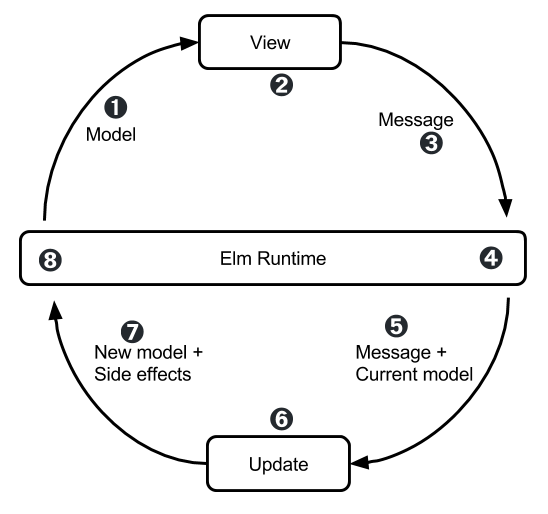The Elm Architecture
Most Elm applications are built using a pattern called The Elm Architecture (TEA). If you have used Redux, this architecture will be very familiar. This is not a coincidence – Redux was heavily inspired by Elm!

This is the Elm architecture:
- ➊ When our application first starts, we have an initial model that is passed to our program’s
viewfunction. - ➋ The
viewfunction renders the current model to produce our program’s user interface (typically as HTML). - ➌ When the user interacts with the rendered view, a message is sent to the Elm Runtime (➍) e.g.
ExpandDetails. - ➎ The Elm Runtime calls our program’s
updatefunction, passing in the message and the current model. - ➏ The
updatefunction returns an updated model, and optionally a list of side effects to run (➐). - ➑ The Elm Runtime calls our
viewfunction again to render our interface with the updated model. It also performs any side effects requested by our program.
Terminology in Elm vs Redux
| Concept | Elm | Redux |
|---|---|---|
| Application state | Model | State |
| Application events | Message | Action |
| Function that transforms the state | Update | Reducer |